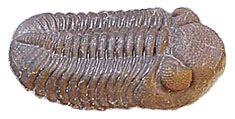Adventures on Earth column for the September 22 edition of The Review
Some of the oldest rock on Earth can be found in what is called the Canadian Shield, a circular shaped belt of rock running from Greenland down to the northeastern US border, and then westward over the Canadian prairie, then up to the Arctic Ocean.
Most of the rock in the formation was laid down from 2.45 to 1.24 billion years ago.
It is the foundation upon which the rest of North America was built. Unlike parts of the United States, the Canadian Shield never was covered by sea.
In two places the Shield dips just a bit into the United States: the Upper Peninsula of Michigan and the Adirondack Mountains. It is the Adirondack Mountain section that we will examine here.
The Adirondack Mountains of New York State are unique among American mountain chains. American mountains are generally uplifted as the result of collision of continental land masses.
The folding and faulting of mountains results from lateral compression when two land masses are pushed together.
The rocks of the Canadian Shield were formed this way in what was known as the Grenville Orogeny. An orogeny is a pulse of mountain building that takes place when continents collide.
The Grenville Orogeny brought the Canadian Shield together with what are now parts of Europe into a supercontinent that geologists call Rodinia. Rodinia eventually broke up, but then the continents came together again during the Alleghenian Orogeny that formed the supercontinent called Pangea. Pangea, in turn, broke up to form the present array of continents and islands.
After the break-up of Rodinia, the Adirondacks eroded away into an elevated plain (called a penneplain) like the rest of the Canadian Shield. Unlike the rest of the Shield, the Adirondacks were submerged under a sea. Sediments covered the Shield rock.
During the Tertiary, which began 65 million years ago until 1.6 million years ago, the Adirondacks began to rise. Geologists think a hot spot developed in the mantle below the continental rock.
Hot spots are upwellings of the viscous mantle rock. Hawaii and Yellowstone are two places located over hot spots. As ocean or continental plate moves over a hot spot, volcanoes form. As the plate moves, the hot spot remains fixed.
A hot spot under the Adirondacks would seem to be fairly new by geologic standards. Hot spots usually form a chain of volcanoes or scars on the land. There is no such chain for the Adirondacks.
The mountains continue to rise at the rate of 2-3 millimeters a year, very rapid by geologic standards.
What does this mean for the future? The Adirondacks will continue to rise, although the rate will vary, for some time to come.
What could happen next, as the mountains rise, is that the rock will stretch. At some point it will break, forming the beginnings of a rift valley. Parts of North America will drift apart as the sea spreads into the rift valley.
None of us will be around to witness the process, but eventually land masses will again begin to move together. That process is the dynamics of the planet.

No comments:
Post a Comment